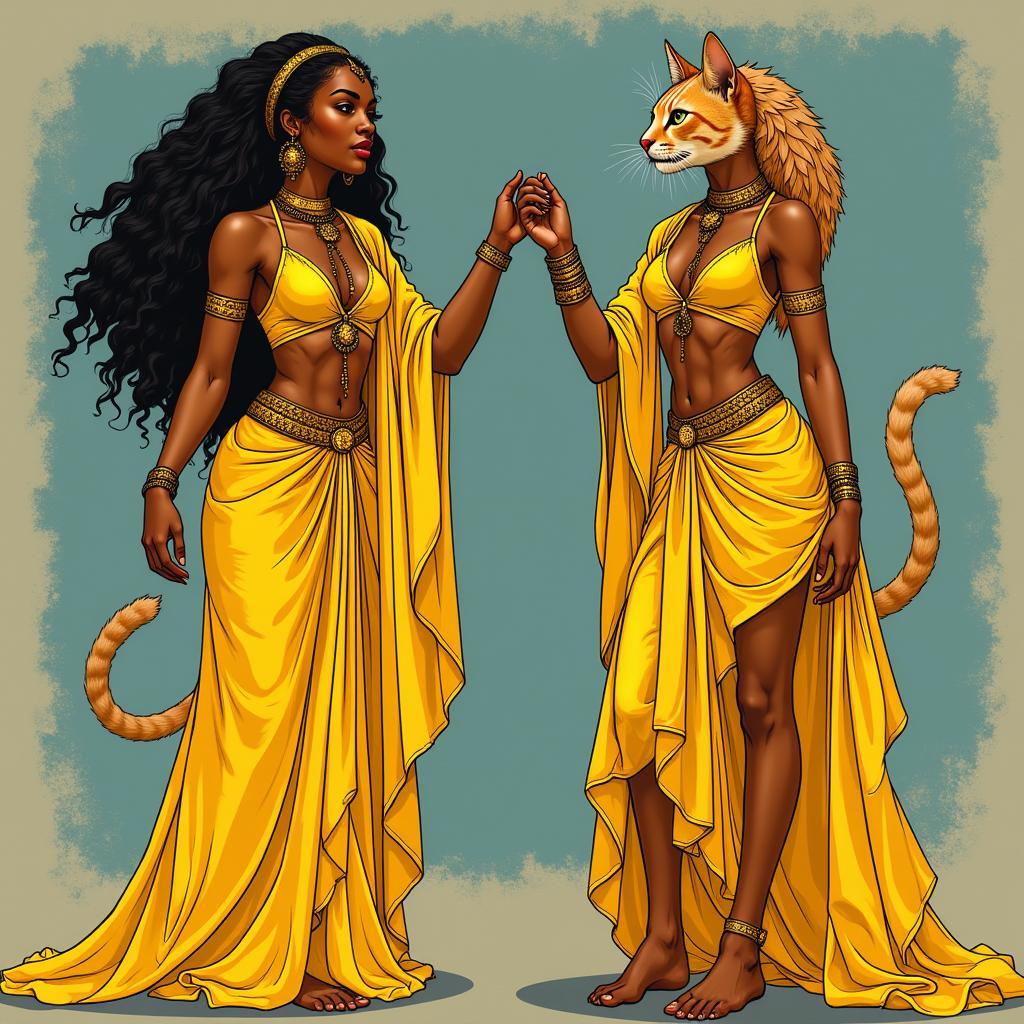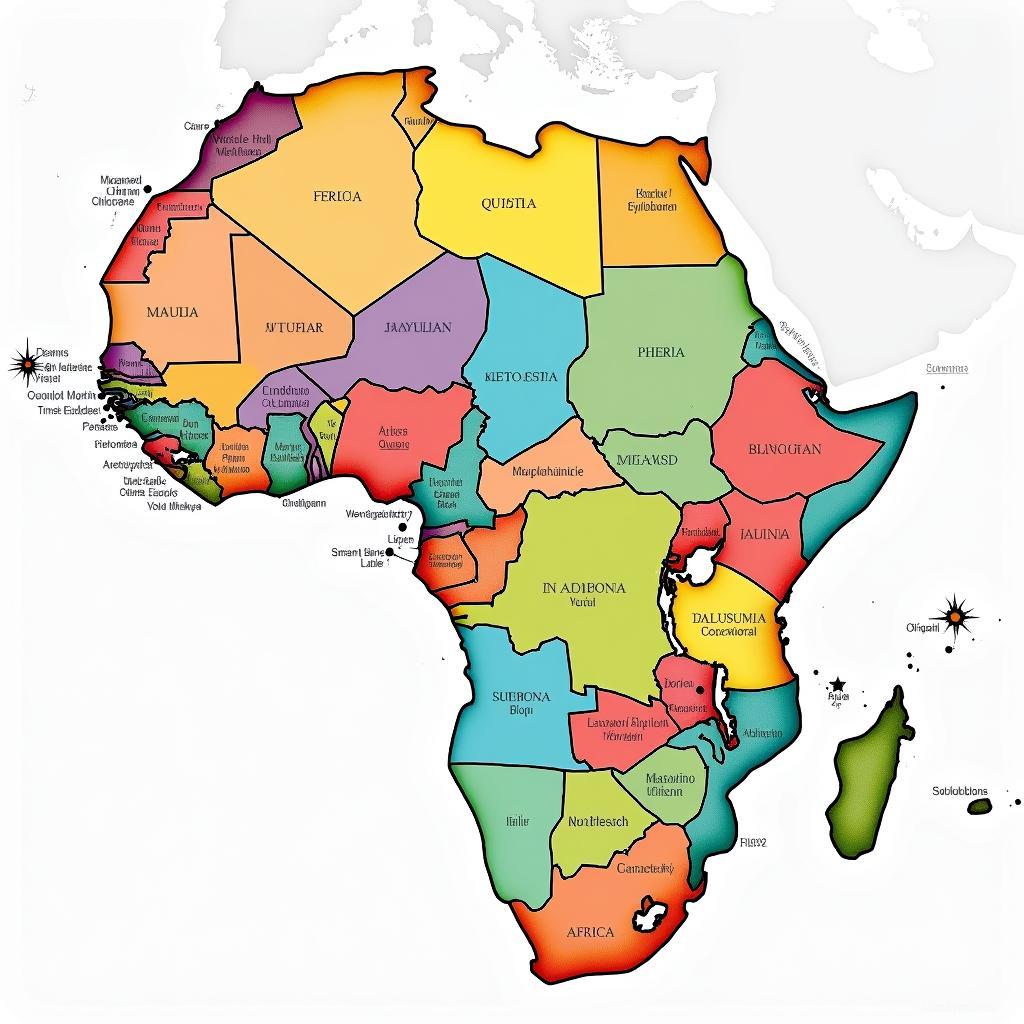The Enchanting World of the African Goddess of Dance
From the heart of the savanna to the lush rainforests, Africa pulsates with the rhythm of life, and at its core, we find the captivating spirit of the African Goddess Of Dance. More than just deities who move with grace, these powerful figures embody the very essence of creativity, celebration, and the interconnectedness of life and nature. They are the embodiment of cultural expression, their stories woven into the fabric of African societies for centuries.
Unveiling the Rhythms: Who is the African Goddess of Dance?
The African goddess of dance isn’t a singular entity but rather a vibrant tapestry of goddesses, each representing different regions, cultures, and spiritual beliefs. In West Africa, we meet Oshun, the Yoruba deity of love, beauty, and flowing waters. Her movements are said to be as captivating and mesmerizing as the rivers she governs. Traveling east to Egypt, we encounter Bastet, the feline goddess associated with music, dance, and joy. Often depicted as a woman with a cat’s head, her presence evokes a sense of playful energy and untamed spirit.
 African Goddesses: Oshun and Bastet
African Goddesses: Oshun and Bastet
Moving south, the rhythms shift, and we encounter the captivating stories of goddesses like Ala, revered by the Igbo people of Nigeria as the mother earth and goddess of fertility. Her dance is a celebration of abundance, growth, and the life-giving forces of nature. Each goddess, with her unique story and attributes, adds to the rich tapestry of dance in African culture.
More Than Just Movement: The Significance of Dance in African Culture
Dance in Africa is more than just entertainment or artistic expression. It’s a way of life, deeply woven into the social, spiritual, and ceremonial practices of various cultures. From birth celebrations and coming-of-age rituals to harvest festivals and ancestral worship, dance serves as a conduit between the physical and spiritual realms.
 African Tribal Dance Ceremony
African Tribal Dance Ceremony
Through rhythmic movements, elaborate costumes, and soul-stirring music, communities connect with their history, ancestors, and the divine. The African goddess of dance, in her many forms, becomes a focal point, a symbol of the power and beauty inherent in this ancient form of expression.
Echoes of the Divine: Exploring Different Dance Forms across Africa
The vastness of the African continent is reflected in the diversity of its dance forms. Each region boasts a unique style, imbued with its own cultural significance and historical context.
- West Africa: Known for its energetic and polyrhythmic dances, this region is home to styles like Agbekor from Ghana, a war dance that has evolved into a celebration of strength and unity, and Gnawa from Morocco, characterized by its spiritual trance-inducing rhythms.
- East Africa: Here, dances like the Mdundiko from Tanzania, often performed at social gatherings and celebrations, showcase agility and intricate footwork.
- Southern Africa: This region is recognized for its powerful and symbolic dances like the Indlamu, a Zulu war dance that embodies masculine pride and strength, often performed with shields and spears.
These are just a few examples of the countless dance traditions that flourish across Africa. Each one tells a story, carries the weight of history, and serves as a testament to the enduring spirit of the African goddess of dance.
The African Goddess of Dance in the Modern World
The legacy of the African goddess of dance continues to inspire and captivate audiences worldwide. Contemporary African dance forms fuse traditional movements with modern influences, reflecting the evolving cultural landscape of the continent. From stage productions to global music videos, the spirit of the African goddess of dance is kept alive, reminding us of the power of dance to connect, inspire, and transcend boundaries.
FAQ: Delving Deeper into the World of African Dance
- What are some other names for the African goddess of dance? As mentioned, there isn’t one specific goddess. Some other notable figures associated with dance and music include Yemoja (Yoruba), Mawu (Dahomey), and Hathor (Egyptian).
- Are there specific instruments associated with these dances? Yes, instruments vary by region but often include drums (djembe, talking drum), string instruments (kora, ngoni), and wind instruments (flute, horns).
- How can I learn more about African dance? Many resources are available, including online classes, cultural centers, and books. You can also experience authentic performances by African dance troupes.
Conclusion: Embracing the Rhythm of Africa
The African goddess of dance, in her many forms, invites us to experience the vibrancy, spirituality, and rich cultural heritage of Africa. Through her captivating movements, we glimpse the stories, beliefs, and traditions that have shaped the continent for centuries. As we delve deeper into the world of African dance, we discover that it’s more than just steps and music—it’s a celebration of life, a connection to the divine, and a testament to the enduring spirit of a continent.
For further exploration of African culture, we encourage you to explore these related articles: african goddesses dance, african godess com, african braids on indian hair, african forest spirits, and african american braided hairstyles video.
Need help uncovering more about the African goddess of dance? Our team is here to assist you 24/7. Contact us via phone at +255768904061, email us at kaka.mag@gmail.com, or visit our office at Mbarali DC Mawindi, Kangaga, Tanzania. Let’s embark on a journey of cultural discovery together!

